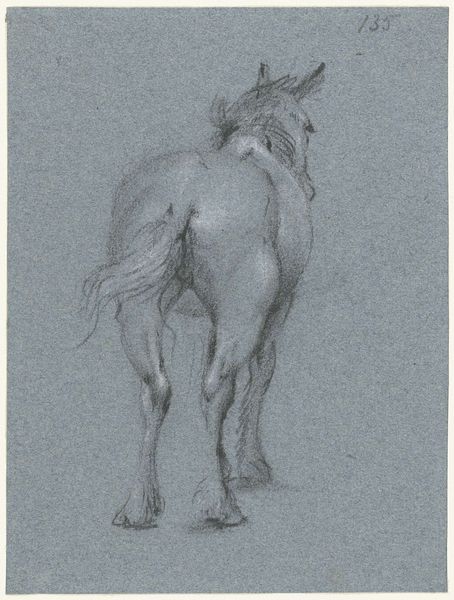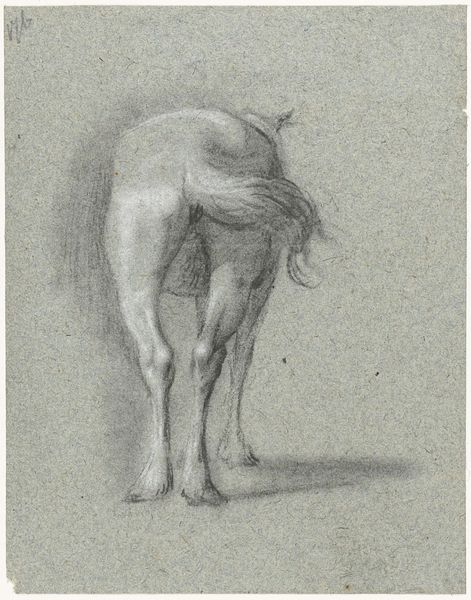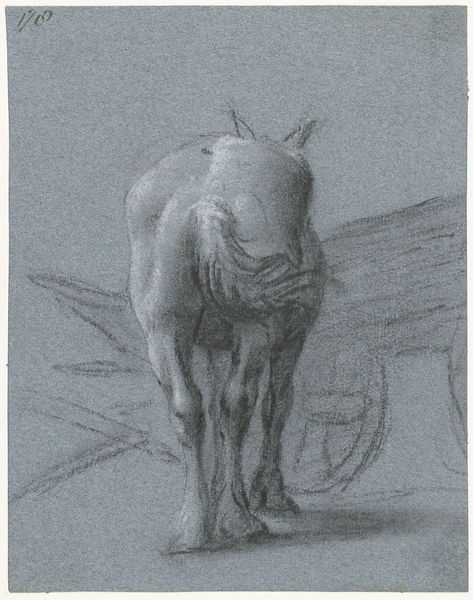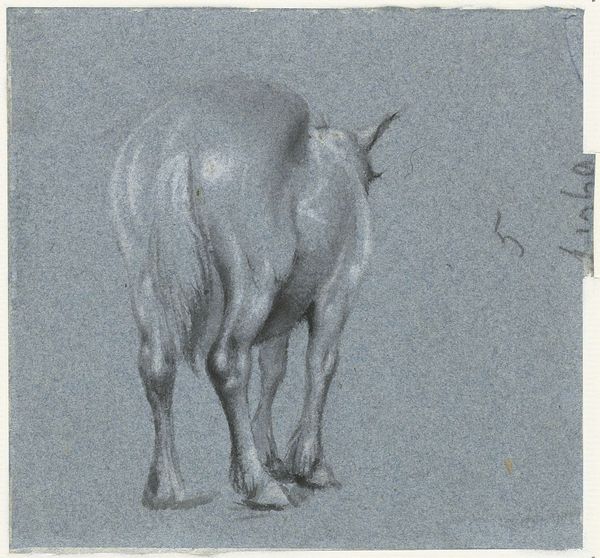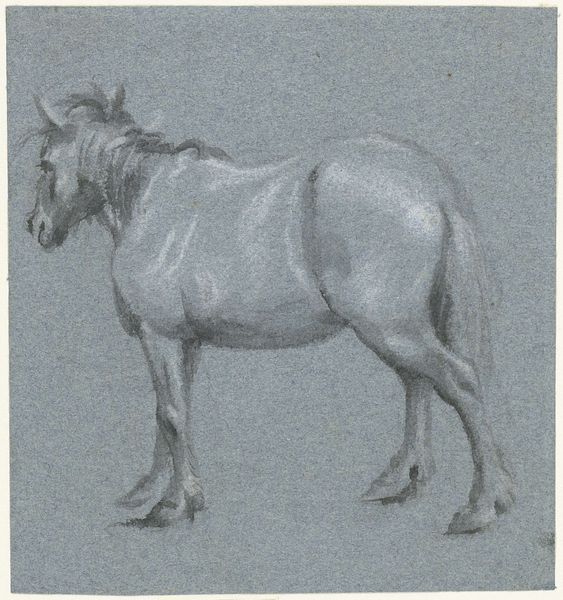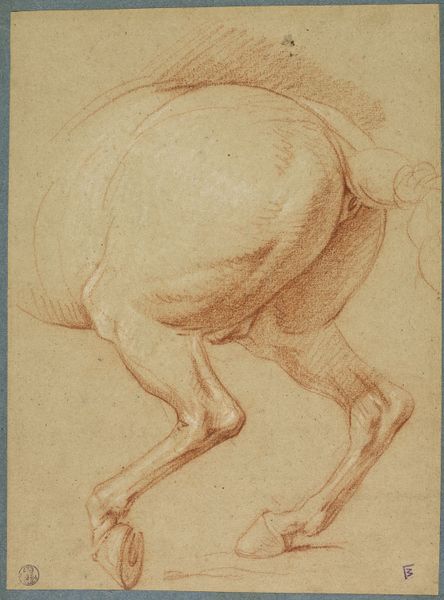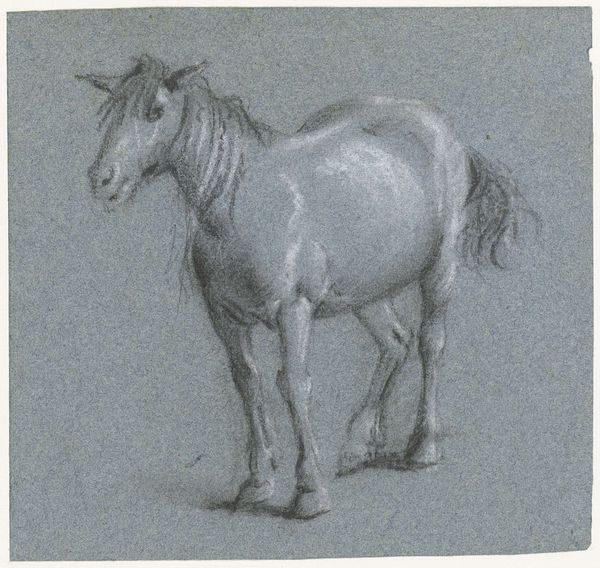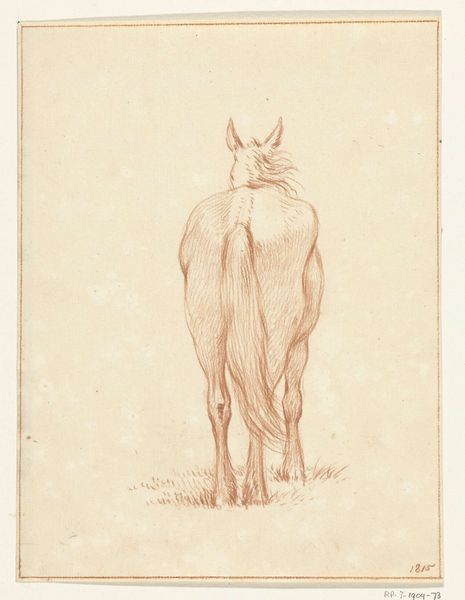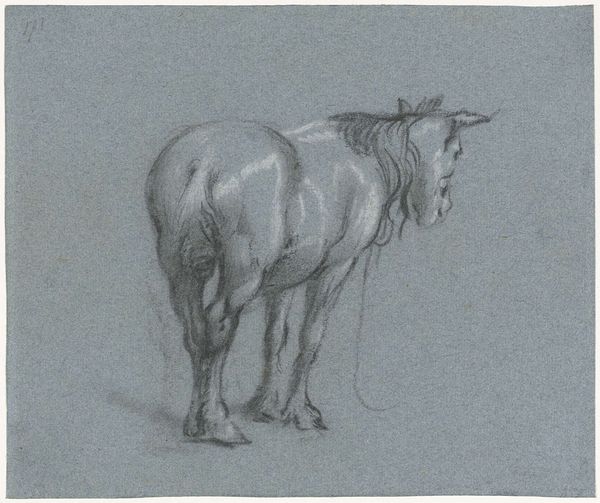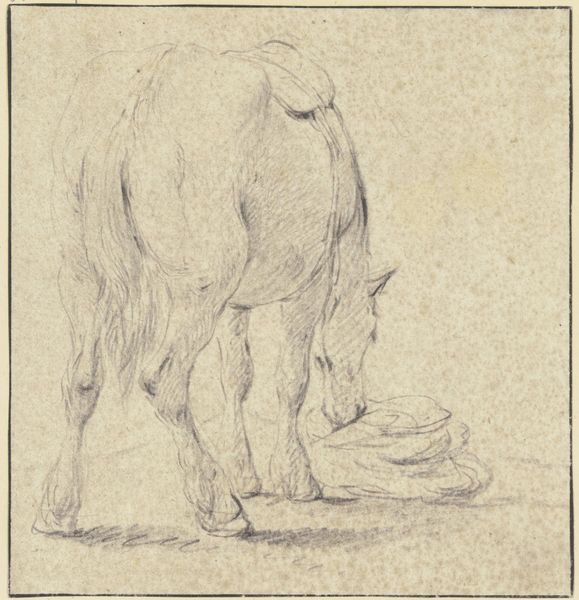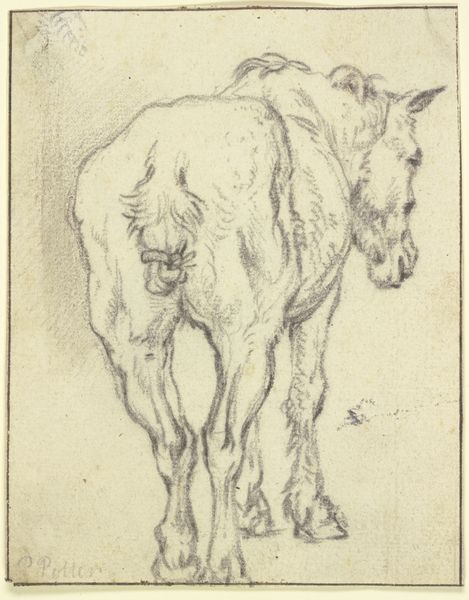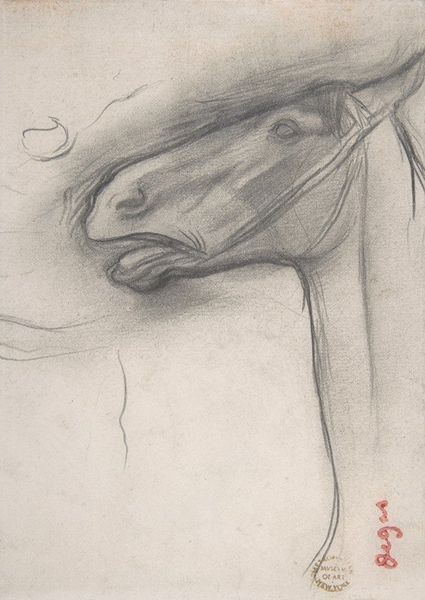
drawing, pencil
#
drawing
#
baroque
#
pencil sketch
#
landscape
#
form
#
pencil
#
line
#
realism
Dimensions: height 144 mm, width 108 mm
Copyright: Rijks Museum: Open Domain
This is Moses ter Borch's "Studie van een paard met zwaaiende staart, van achteren," made with pen in grey paper in the 17th century. Imagine ter Borch, a young artist in the Dutch Golden Age, a period of immense wealth and artistic production in the Netherlands. This drawing, a study of a horse, gives us a glimpse into the world of artistic training at the time, yet it also hints at the economic and social status attached to owning horses during this period. While seemingly simple, the horse, seen from behind with its tail swaying, evokes both the beauty and the labor connected to these animals. Consider how the artist, through his depiction, invites us to reflect on the relationship between humans and animals, representation and reality. What does it mean to capture the essence of a living being with a few strokes of a pen? This study ultimately serves as a poignant reminder of our shared history and the ways in which we perceive and interact with the world around us.
Comments
No comments
Be the first to comment and join the conversation on the ultimate creative platform.
